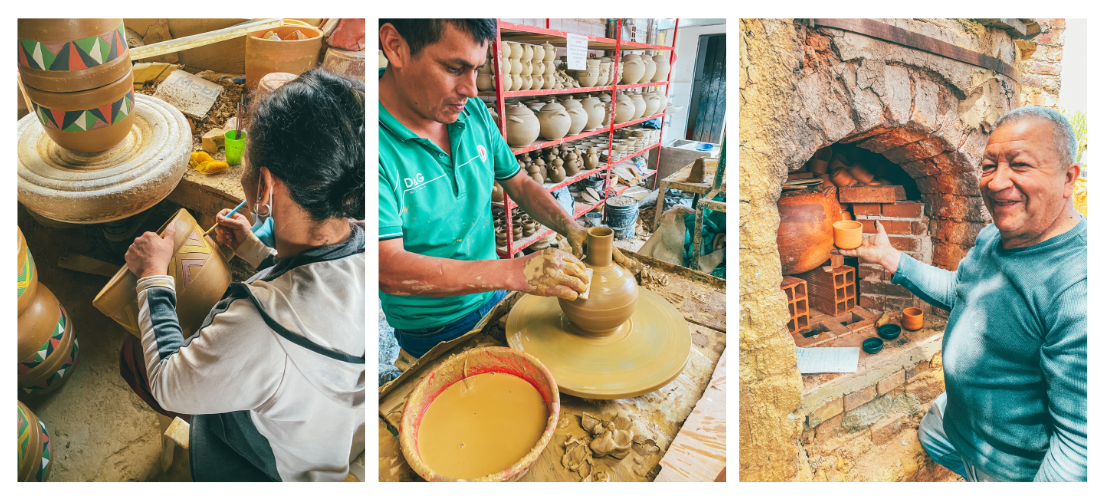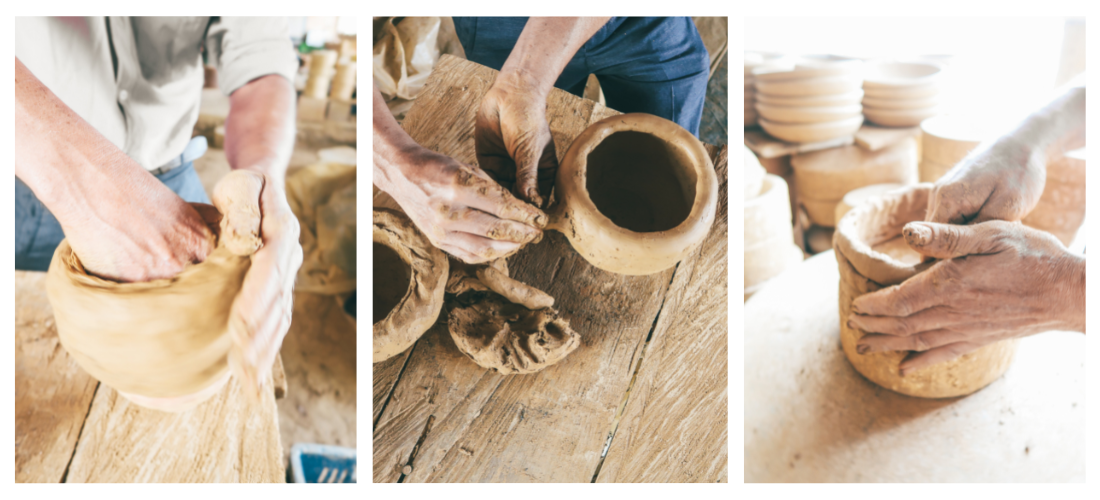THE STORY
The Founder

Hi! My name is Louis Demuynck. I’m just a regular 25 year old Belgian guy with an obsession for plants and pottery. I studied International Business Management in Ghent. Two years ago, I was craving for a new adventure, so I decided to do my foreign exchange in Bogotá, the capital of Colombia, where I studied for 5 months. That’s where I got to know the ridiculously beautiful terracotta pots from the village of Ráquira for the first time. I still remember the first time when I walked into the warehouse stuffed with these terracotta beauties. I wanted to buy everything!! And it got me thinking...would I be the only one who gets so excited about these terracotta pots? Definitely not!
That’s where the Colombian Boho seed was planted in my brain. And look! A beautiful tree has grown up! I went back to Colombia for 3 months to make my entrepreneurial dream come true. I looked for the right partners, but above all I dedicated time in getting to know the people of Ráquira, the admirable craftsmen who spend their days converting clay into precious pieces, one by one unique.
The Product

With Colombian Boho I want to bring these adorable handmade pieces to your living room. These unique terracotta pieces immediately convert your interior into a “boho” home with character. The natural terracotta tones combine beautifully with any plant. You will be surprised how these natural colors and materials bring a feeling of peace into your home. Each terracotta pot is unique and handmade by an artisan in Ráquira in Colombia.
The natural terracotta pots are also the perfect solution to keep your plants alive. Terracotta is a natural material with the ability to “breathe”. It can absorb water and air. Did you know that most plants die from overwatering? Well, with these terracotta pots you can avoid this problem, because the porous clay pots will absorb the excess water in the plant’s soil.
The Origin
 All terracotta pottery is made in a small village in the centre of Colombia, called Ráquira. Ráquira literally means “pueblo de ollas” or “village of pottery”. Making pottery has been a tradition in Ráquira for centuries because of the natural presence of clay in the area. This type of clay cannot be found in any other part of Colombia. Even before the Spanish arrived in Colombia, the indigenous “Muiscas” were famous for their pottery and ceramics. There have been found pottery pieces in the area that date back to 8000 before Christ! As a result of the indigenous heritage, the craft passed from generation to generation and up to the present day, more than 80% of the town’s population makes a living with these artisanally crafted pots. Every family of craftsmen has their own ceramics workshop connected to their home.
All terracotta pottery is made in a small village in the centre of Colombia, called Ráquira. Ráquira literally means “pueblo de ollas” or “village of pottery”. Making pottery has been a tradition in Ráquira for centuries because of the natural presence of clay in the area. This type of clay cannot be found in any other part of Colombia. Even before the Spanish arrived in Colombia, the indigenous “Muiscas” were famous for their pottery and ceramics. There have been found pottery pieces in the area that date back to 8000 before Christ! As a result of the indigenous heritage, the craft passed from generation to generation and up to the present day, more than 80% of the town’s population makes a living with these artisanally crafted pots. Every family of craftsmen has their own ceramics workshop connected to their home.
Nevertheless, a lot of younger people don’t see their future in making pottery and go live in the bigger cities. All the more reason to support the local community of craftsmen in Ráquira, create better prospects and secure the further existence of their beautiful craft. It would be such a shame if this ancient tradition with strong indigenous roots became extinct. In addition, there are many craftsmen who make beautiful pieces but they don’t have the resources or knowledge to commercialize them. That is where Colombian Boho wants to make a difference for the community.
The Clay Creation Process
Clay extraction process

The craftsmen don’t just go buy clay and start creating pottery. They extract the clay themselves from the local clay mines near Ráquira. There are mines with black, red and white clay. The extraction process is done entirely manually, which allows them to have control over the quality of the material that they extract.
Transformation process

After the extraction of the raw materials from the mines, the clay gets dried, milled and ground. Then water is added and the clay gets milled again until the right texture is obtained. In this picture you can see this is traditionally done with donkeys
Sieving process
When the clay has the right consistency, it is still not ready for the pottery creation process. The clay is sieved through a metal mesh to extract any stones and impurities the it still contains. This process is really important to obtain a good quality clay. That way, artisans can better polish their products and avoid imperfections when decorating the pieces.

Kneading process
This is the very last process before the artisan can start creating pottery. The artisan kneads the clay, just like a pizza chef kneads his pizza dough. The clay gets the perfect consistency and the last impurities are removed. Now the clay is finally ready to be used in the pottery creation process
The Pottery Creation Techniques
The artisans in Ráquira use a variety of different techniques to create all kinds of pottery. We will explain the three most important techniques:
“El modelado” hand building technique

This is the most ancient and “primitive” technique that was used by the indigenous Muiscas in Ráquira. The artisan doesn’t use any extra tools, just human hands and clay!
"El moldeado" molding technique

Also the moulding technique is a frequently used by artisans in Ráquira to create more complicated ceramic objects. They use plaster casts to form the clay in a particular way. The clay gets hard due to the plaster molds that absorb the clay’s humidity. Our iconic little indios are made this way!
“El torneado” wheel throwing technique

Wheel throwing is probably one of the best known techniques. a potters wheel is a machine used in the shaping (known as throwing) of round ceramic ware. The wheel may also be used during the process of trimming the excess body from dried ware (which is the case in this picture), and for applying incised decoration or rings of colour. All our little coasters are made this way by señor Sierra and his family!

